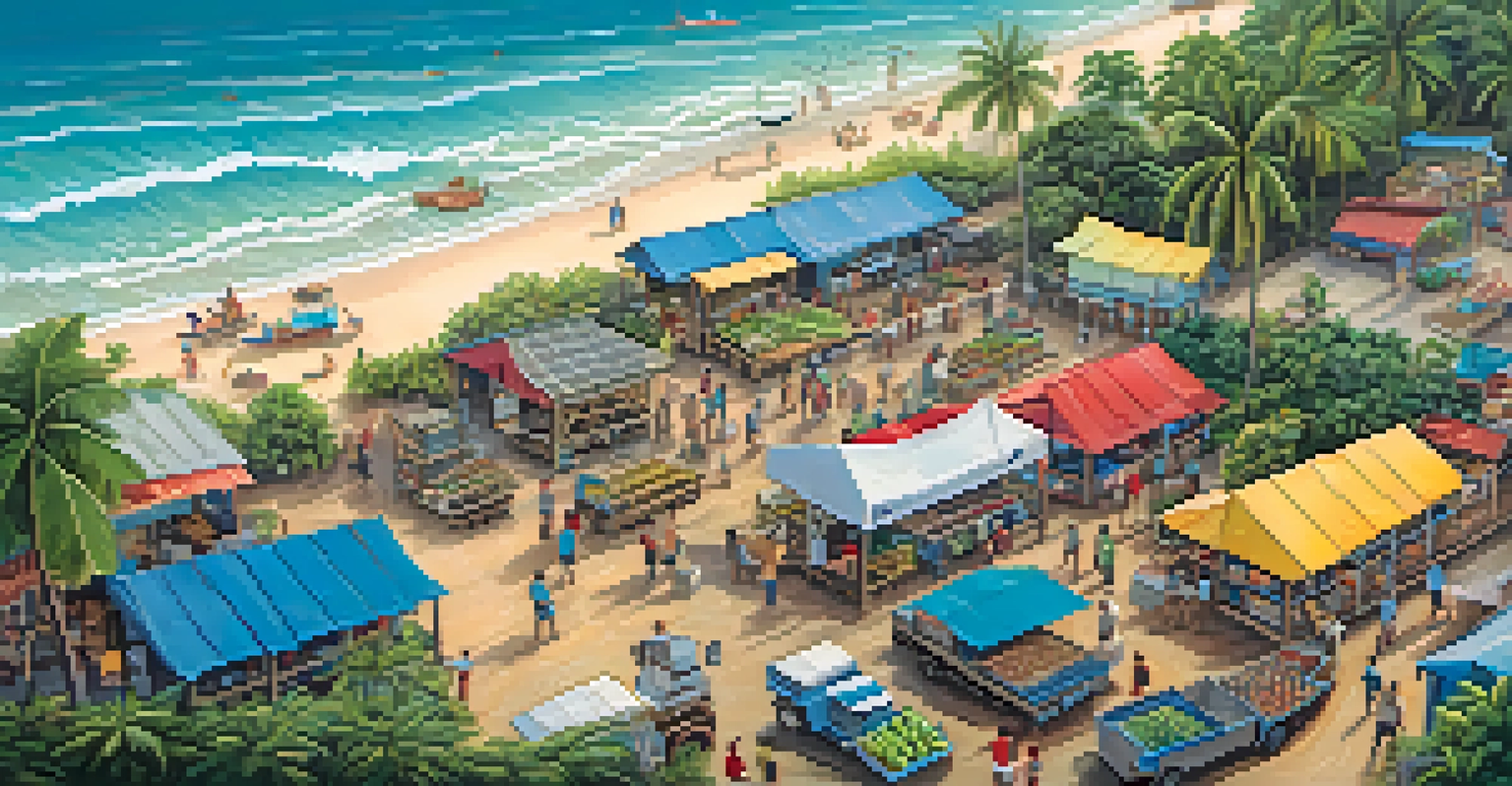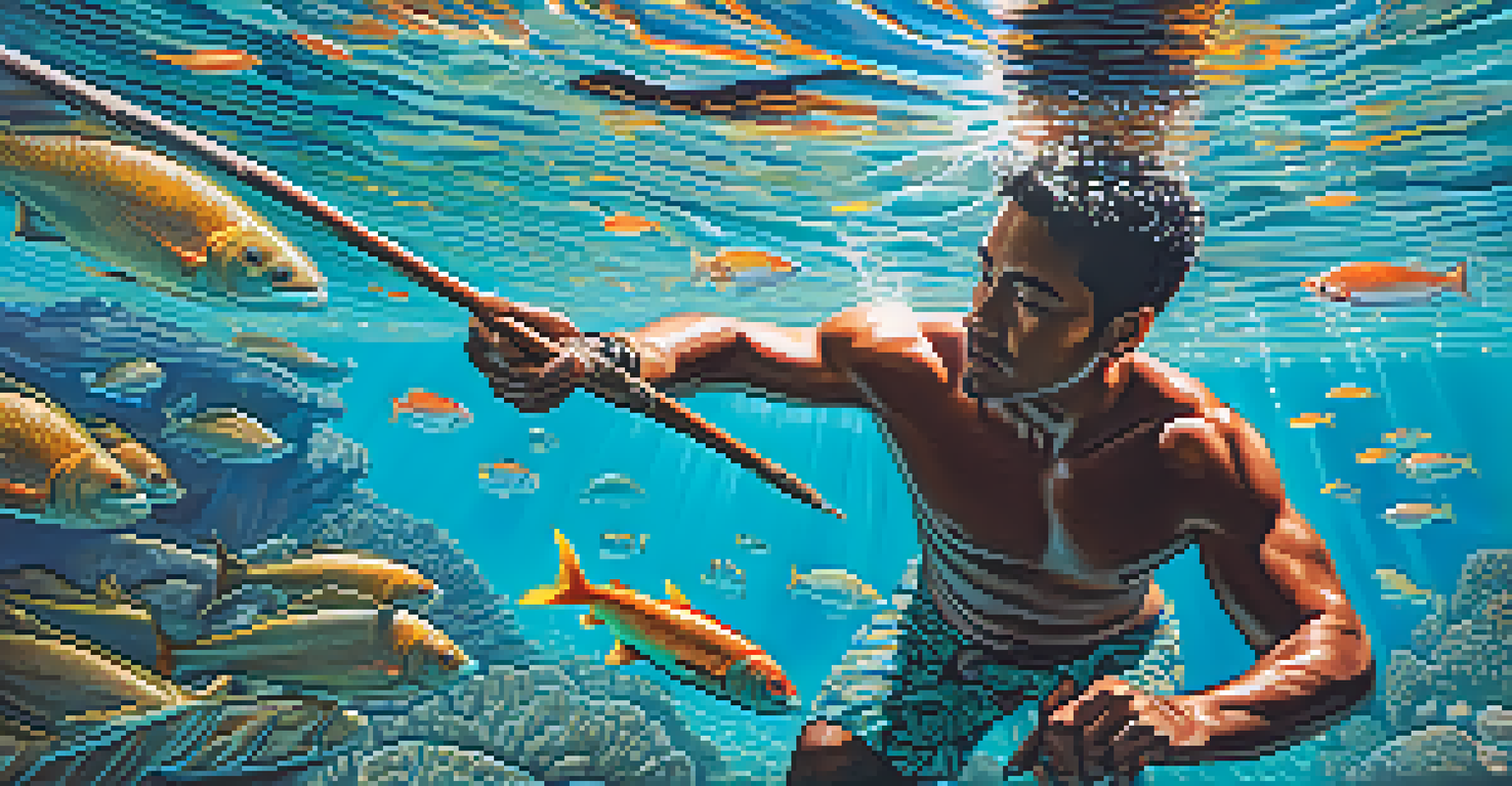Sustainable Fishing Practices to Protect Hawaii's Marine Life

Understanding the Importance of Sustainable Fishing
Sustainable fishing is crucial for maintaining the delicate balance of marine ecosystems. In Hawaii, where the ocean is a central part of culture and livelihood, it's vital to fish responsibly. Overfishing can lead to the depletion of fish stocks and disrupt the food chain, affecting not only marine life but also local communities that rely on fishing.
The future will be shaped by the choices we make today, in the way we manage our resources and the impact we have on the world around us.
By adopting sustainable practices, we can ensure that future generations enjoy the same vibrant marine life. This means fishing in ways that do not harm habitats or deplete fish populations. The goal is to create a harmonious relationship between humans and nature, where both can thrive.
In Hawaii, sustainable fishing isn't just an environmental issue; it's also a social one. It fosters community resilience and supports local economies, allowing small-scale fishermen to compete with larger operations. Everyone has a role to play in preserving this unique underwater world.
Key Sustainable Fishing Techniques in Hawaii
Hawaiian fishermen utilize various sustainable techniques to protect marine life. One popular method is the use of 'hook and line' fishing, which reduces bycatch—unwanted fish caught unintentionally. This practice allows fishermen to target specific species while minimizing harm to others, maintaining biodiversity.

Another technique is the use of fish traps, which are designed to catch fish without causing injury to non-target species. These traps can be placed in specific locations that minimize disruption to the ocean floor, ensuring that habitats remain intact. By focusing on responsible methods, fishermen can contribute to the overall health of the marine environment.
Sustainable Fishing Supports Ecosystems
Sustainable fishing practices are essential for maintaining the health of marine ecosystems and ensuring future generations can enjoy vibrant ocean life.
Spear fishing, when done responsibly, is also considered a sustainable option in Hawaii. It allows for selective harvesting, meaning that only the desired fish are caught. This method not only reduces waste but also encourages fishermen to be more mindful about their impact on the ecosystem.
The Role of Local Communities in Sustainable Fishing
Local communities play a pivotal role in promoting sustainable fishing practices in Hawaii. Traditional knowledge and cultural practices are often passed down through generations, emphasizing the importance of respecting marine resources. By integrating these values with modern sustainability efforts, locals help foster a sense of stewardship for the ocean.
We won’t have a society if we destroy the environment.
Community-based management initiatives are gaining traction, allowing residents to have a say in regulations that affect their fishing practices. This empowers fishermen to make decisions that benefit both their livelihoods and the environment. When local voices are heard, it leads to more effective and culturally relevant sustainability efforts.
Moreover, educational programs in schools and community centers are raising awareness about the importance of protecting marine life. By engaging younger generations, Hawaii is cultivating a culture of conservation that will benefit the ocean for years to come. This grassroots approach ensures that sustainability becomes a shared value among all community members.
Regulations Supporting Sustainable Fishing in Hawaii
Hawaii's government has implemented several regulations aimed at promoting sustainable fishing practices. These include size and bag limits, which restrict the number of fish that can be caught and ensure that younger fish have a chance to grow and reproduce. Such rules help maintain fish populations over time.
Closed seasons are another crucial aspect of these regulations, allowing fish stocks to recover during specific times of the year. By designating periods when fishing is restricted, the state can support the replenishment of vulnerable species. This proactive approach is essential for sustaining Hawaii's marine ecosystem.
Community Involvement is Key
Local communities play a vital role in promoting sustainable fishing by integrating traditional knowledge with modern practices and fostering stewardship for marine resources.
Furthermore, licensing and permitting systems help monitor fishing activities and ensure compliance with sustainable practices. By tracking who is fishing and where, authorities can better manage fish stocks and address illegal activities. These regulations are vital for safeguarding Hawaii's rich marine biodiversity.
The Impact of Climate Change on Marine Life
Climate change poses a significant threat to marine life in Hawaii, affecting everything from coral reefs to fish populations. Rising ocean temperatures can lead to coral bleaching, which devastates these vital ecosystems. Healthy reefs are essential not only for fish but also for supporting tourism and coastal protection.
Changes in ocean chemistry, including increased acidity, can impact the growth and survival of marine species. As certain fish struggle to adapt, this can lead to shifts in population dynamics, further complicating sustainable fishing efforts. Understanding these impacts is critical for developing effective strategies to protect marine life.
By implementing sustainable fishing practices, we can help mitigate some of the impacts of climate change. A resilient marine ecosystem is better equipped to withstand environmental stressors. This means that sustainability isn't just about protecting fish—it's also about creating a buffer against the changes that lie ahead.
Innovative Solutions for Sustainable Fishing
Innovation is at the heart of many sustainable fishing solutions in Hawaii. For instance, the use of technology such as drones and underwater cameras can help monitor fish populations and habitats in real time. This data-driven approach allows fishermen and conservationists to make informed decisions based on current conditions.
Additionally, aquaculture is emerging as a viable alternative to wild-caught fish, providing a sustainable source of seafood. By raising fish in controlled environments, we can reduce pressure on wild populations and promote responsible practices. This method also allows for the cultivation of native species, supporting local ecosystems.
Regulations Enhance Fish Populations
Hawaii's government regulations, including size limits and closed seasons, are crucial for protecting fish stocks and sustaining the marine environment.
Community-supported fisheries (CSFs) are another innovative approach gaining popularity. These programs connect local fishermen directly with consumers, ensuring that seafood is sourced sustainably while supporting local economies. By fostering direct relationships, CSFs encourage accountability and transparency in fishing practices.
How You Can Support Sustainable Fishing Efforts
Supporting sustainable fishing practices starts with making informed choices as a consumer. Opt for seafood that is certified by organizations like the Marine Stewardship Council or the Aquaculture Stewardship Council. These labels indicate that the seafood is sourced sustainably, helping you play a role in marine conservation.
You can also visit local fish markets and support community-supported fisheries. By purchasing directly from local fishermen, you're not only getting fresh seafood but also contributing to the local economy and encouraging sustainable practices. Your purchasing power can drive change and promote a healthier ocean.

Finally, getting involved in local conservation efforts can make a significant difference. Whether through beach cleanups, educational programs, or advocacy for better regulations, your efforts can help protect Hawaii's marine life. Every action counts, and together, we can ensure a sustainable future for our oceans.